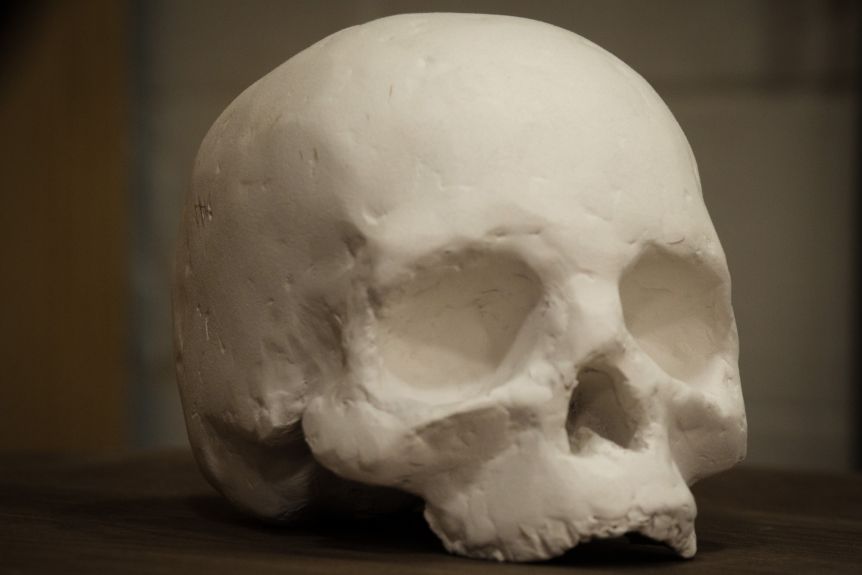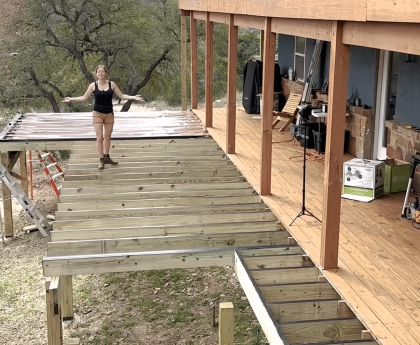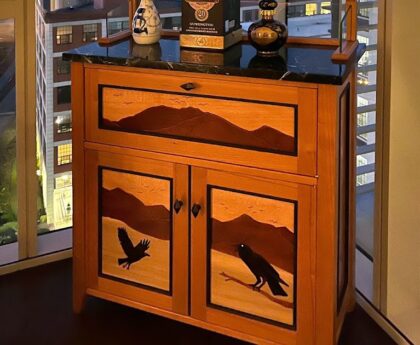A fun project making 3D cardboard sculptures using my Full Spectrum Laser cutter. I downloaded a free model of a human skull from Autodesk 123D. I then imported that model into 123D Make which lets you turn 3D models into 2D build plans and gives you step by step assembly instructions. Once you import your model you set the output size and the thickness of your material. The software quickly calculates how many sheets and parts you need based on your specs. I then used the outputted PDF to cut the cardboard sheets on my Full Spectrum Laser cutter. The Cardboard pieces were glued together using a bookbinding PVA glue which set quick allowing me to quickly move through the layers. I finished off the physical model using an air drying modeling clay. In a future video I plan on aging the skull to make it look old. If you have any suggestions on how to age it, let me know in the comments down below.
Tools and Materials Used
- Full Spectrum Laser
- Dritz 40-Piece T Pins, 1-3/4-Inch
- Bookbinding Adhesive
- DAS Air Hardening Modeling Clay
- Single-Wall Corrugated Cardboard Sheet
- 3D Skull Model
- 123D Make
Step 1: Download Skull Model
For this project I’m going do download a 3D model of a skull from Autodesk 123D. You do need to be signed in to download it but the account and the file is free. You will also need to download 123D Make from Autodesk. The app is completely free and it’s what we’ll use to slice up our model.
Step 2: Open 123D Make and Import Model
Open up 123D Make and import the STL file we previously downloaded. Here we can move around and examine our model.
Step 3: Output Specs
Then we’ll jump over to the Manufacturing Settings. I’m going to use 10″ x 10″ sheets of cardboard so I’ll input that in the bottom dialog box. And the thickness of my cardboard is 3/16″.
Step 4: Stacked Slices
Next I need to choose my construction technique which is stacked slices. Then I’ll choose my slice direction that’ll give me the best option when it comes time to glue up. You want to avoid tiny pieces if possible. The areas in blue are potential issues which mean they may not have enough surface area to adhere to. So you do want to find that sweet spot that works for your model.
Step 5: Export PDF
Over in the right column you’ll see I need 17 10″x10″ sheets with a total of 80 parts. You can change the layout arrangement to nested which will reduce the amount of sheets needed and nest objects within other objects to save space and pages. I’ll then export my file into a multi-page PDF. The lines in blue will be cut all the way through and the lines in red will be engraved in the cardboard and will assist in the assembly. The tiny blue circles will be used for registration alignment.
Step 6: Open in InkScape
To get the file over to my Full Spectrum laser I open the PDF in a compatible program, here I’m using InkScape which is a free vector drawing application. I have a 15 page PDF and I can only send 1 page at a time to the laser cutter. I choose which page to open and hit OK. From Inkscape I choose file/print and choose the Full Spectrum driver which shoots it over to the laser software.
Step 7: RetinaEngrave 3D
Here in the Retina Engrave laser software I need to choose Vector Cut and I can assign cutting strength to the different colors of the art. The blue lines I want to cut all the way through so I set a speed of 22 and a power of 40. This was determined by a test I ran earlier. For the red lines I use a much lower power and faster speed so the laser doesn’t cut very deep into the cardboard. Hit start job and let the laser do it’s thing.
Step 8: Laser Cutting
You will need to open each page of the PDF separately and send to the laser.
Step 9: 123D Make Assembly
Once you have all your pieces cut you can go back to 123D Make and it will give you a guide to each layer of assembly. Some layers will have multiple pieces and will be labeled as so. Layer 10 has three pieces, 10-1, 10-2 and 10-3. As you work through the assembly you can click the next step in the timeline to see how your physical model should look.
Step 10: Cardboard Assembly
Starting with layer 1 I’ll attach it to layer 2 using t-pins in the registration holes for proper alignment. I’m using a bookbinding PVA glue which sets pretty quick allowing me to proceed to the next layer right away. There are 30 layers total which took maybe an hour and a half to assemble.
Step 11: Completed Assembly
The completed cardboard assembly.
Step 12: Adding Modeling Clay
I then add a layer of air hardening modeling clay over the entire model. I ended up removing the bottom jaw as there wasn’t much detail in it and it wasn’t structurally stable.
Step 13: Sanding
Once dried I sanded down the rough spots.
Step 14: Final Coat of Clay
I then added another layer of clay to cover up any remaining traces of cardboard. Dipping it in water helps it spread easer and allows me to smooth it out.
SOURCE: Make Something Blog – Read entire story here.





















